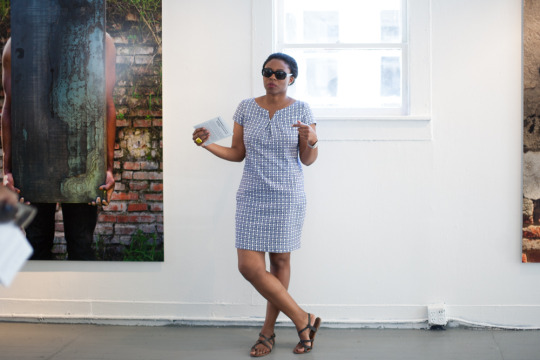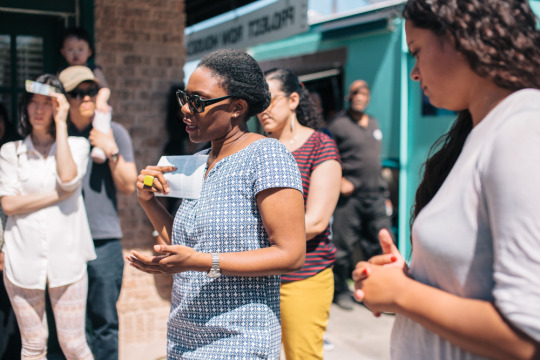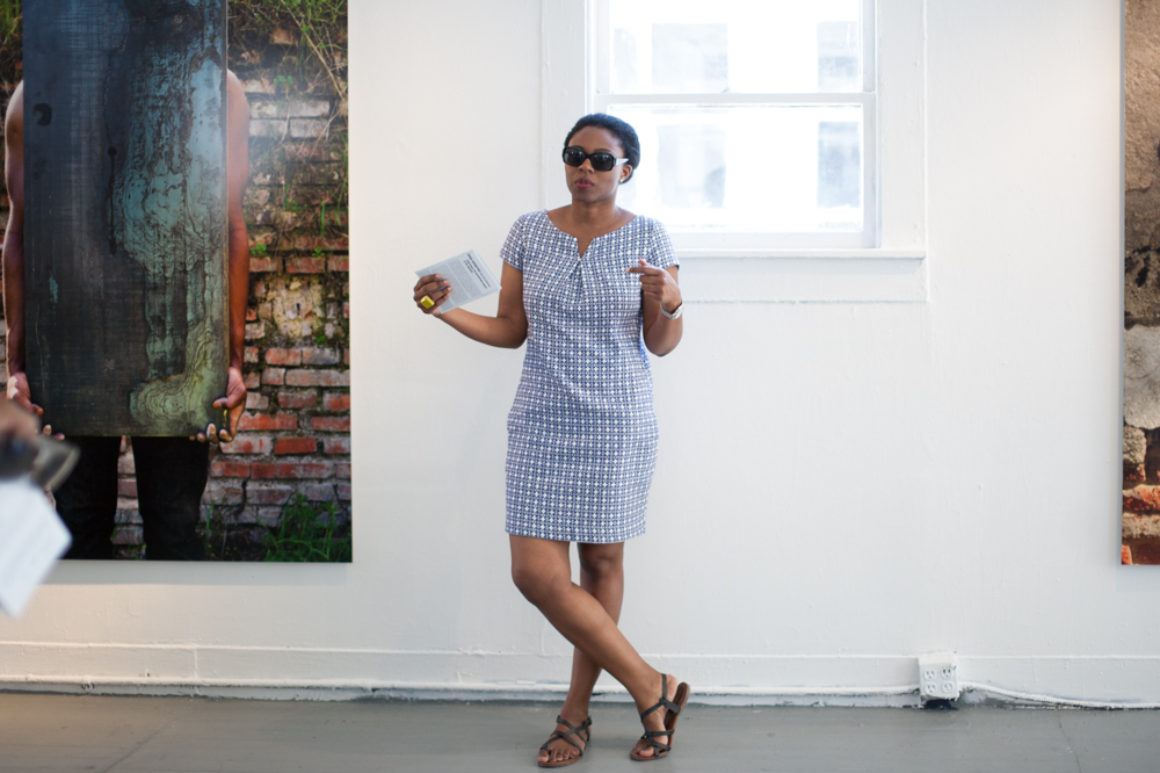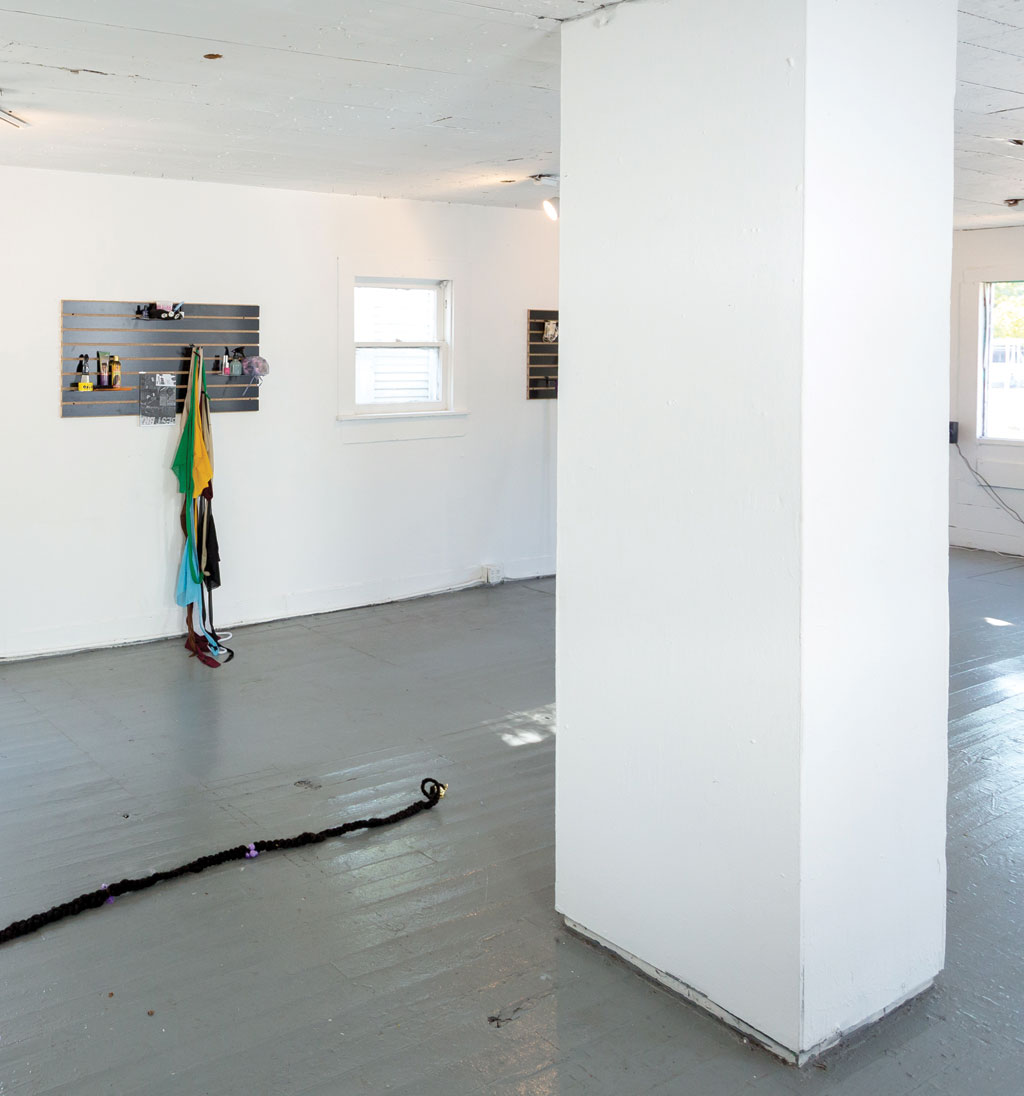By Victoria Laxalt
Photos by Blair Truesdell

Please explain your vision for this exhibition.
For this round I wanted to organize an exhibition that touched in my curatorial interests, specifically my interest in notions of “place” but that also reflected Project Row Houses’ mission and the ways in which people understand the organization as a site that engages with art, as a community organization, as a staple of the Houston art community, as a site that deals with African American/black history. I eventually decided to that I wanted to examine my time that was spent in Houston and reflect on my engagement with PRH, with how I experienced community within the city, with the relationships that I was building with other arts practitioners in and beyond Houston, and reflected some of the things that were preoccupying my thoughts at the time which are reflected in the exhibitions themes and in the works that the artists contributed.
How did you choose these particular artists?
I gave myself a set of criteria that when I was setting up the parameters for this exhibition. One of them was that the artists that I selected for this round had to be those that I was either directly in dialogue with, or whose work I was engaged with, while I was in Houston. For example, I wasn’t in dialogue with Alexandrea Arrechea while I was in Houston but I was introduced to it by Marcela Guerrero who was a friend and colleague who was based in Houston at the time that I was. Another criteria was that either the work that was going to be installed for the exhibit had to relate to themes of place, community, migration, architecture, memory, pedagogy, minimalism, class and diaspora. I also wanted to the works to respond to PRH’s mission but also the characteristics or tropes that many associate with either PRH as an organization or the Row Houses in particular: specifically those of architecture, community, issues of class, and “blackness”.

How does the work by the non-Houstonian artists fit into the unique mission of PRH?
For this round, I don’t think that the work of the artists who are based in Houston necessarily is attuned to the ethos/aesthetic/or mission of PRH by virtue of their living in the city. Though they (Nathaniel Donnett, Kenya Evans and Ayanna Mccloud) all have had long standing relationships and/or prior involvement with PRH I think that their work shares an affinity with PRH because of where their collective interests, values and artistic practices are located. Similarly, the other artists who are not based in Houston have interests, focuses and practices that overlap with those that are attached to PRH: much of Alexandre Arrechea’s practice is informed by architecture, Nicole Miller’s work that is in the round, Death of a School, resonates with the closing of the Ryan School which was located in close proximity to PRH, the issues of migration that Delio Delgado’s Cosmopolitan (The Poetry of Travel)explores can be tied to issues of gentrification but to the overall long history of migration by the African diaspora within the Americas, and Erika DeFreitas’sometimes the metonymic object is an absence touches on issues of domesticity and in a very literal way, the making and unmaking of a “home” which is very much imbricated within the fabric of a “community” which is something that PRH is very invested in maintaining.

You have lived in Canada, the UK, and the States but have been stationed in Texas recently. Considering your international perspective, what do you find is special about Houston’s art scene?
Well, what is interesting about Houston’s art scene is that even though Houston is one of the largest cities within the United States the art scenes and communities within the city are fairly accessible and feel close knit in a way that is akin to what you would experience in a city of a much smaller size. I also think that Houston has a number of really strong arts institutions which all have different focuses. Together, they contribute to building a rigorous arts ecology that benefits the different practitioners within the city.
You have worked with some of these artists previously; what do you like about working with the same artist more than once?
It’s very simple, the more time that is spent with someone and/or their work, the more that my understanding of their work and methodologies shifts and deepens. I liken it to any other type of creative or working collaboration or partnership that is revisited over the course of a professional trajectory.


